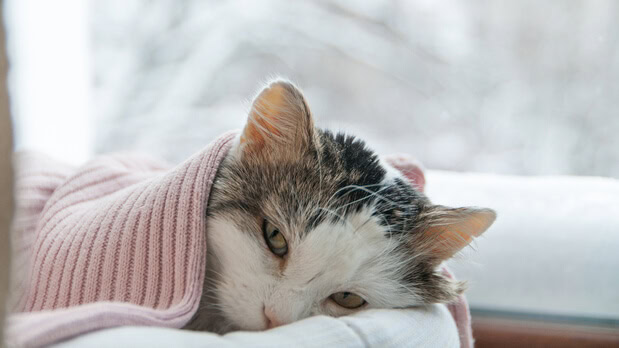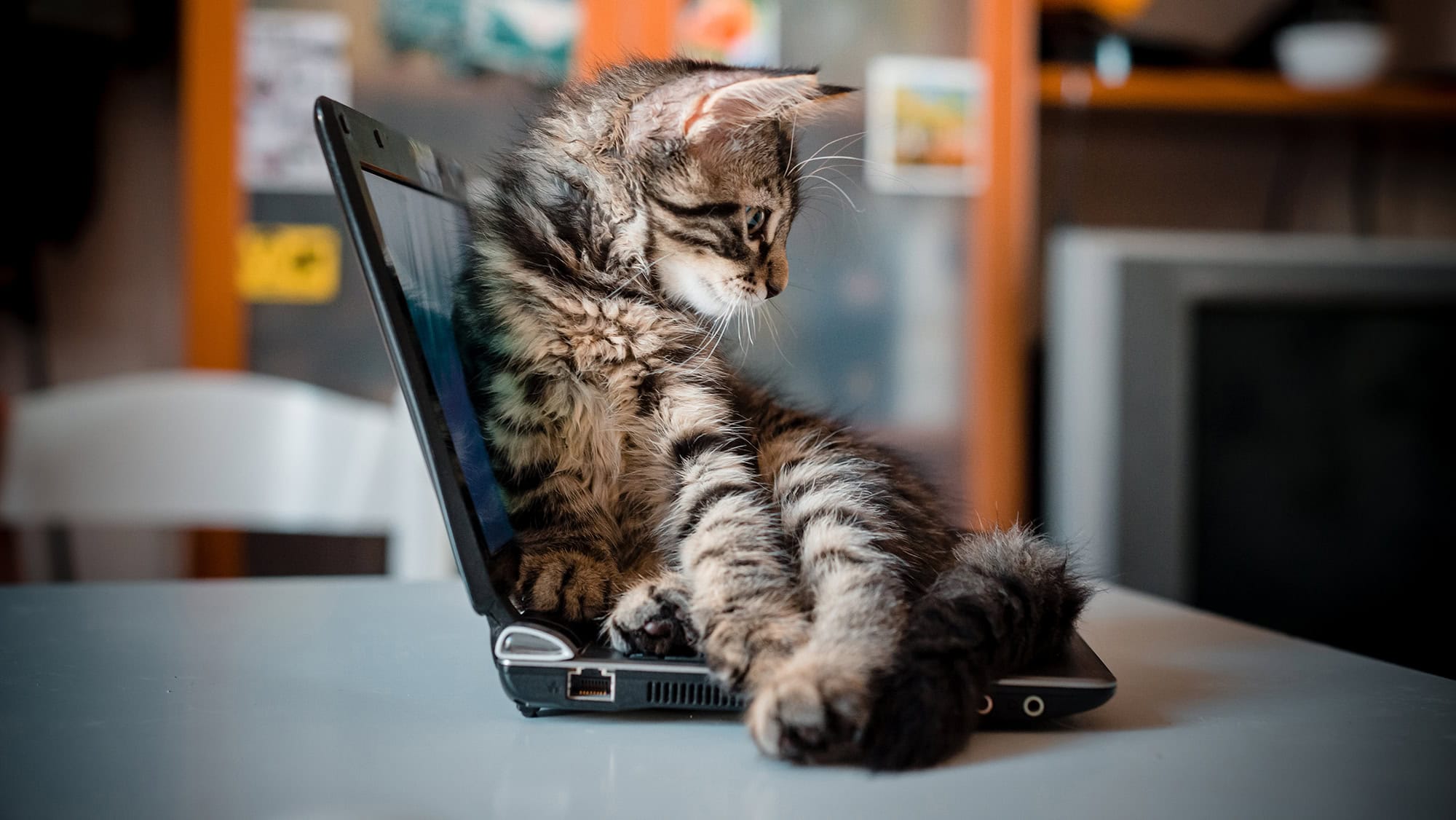Have you ever wondered whether your cat could be dealing with anemia? In this guide, we will explore the realm of feline anemia, unraveling its origins, identifying its symptoms, and discovering the available options for treatment.
What Is Anemia in Cats?
Feline anemia occurs when a cat’s blood can’t transport oxygen effectively. This can be due to a decrease in red blood cell count or a low hemoglobin concentration. As red blood cells, and the hemoglobin inside them are the primary way the blood delivers oxygen to the heart, brain, muscles, and all the other tissues of the body, severe cat anemia can be life-threatening if not treated right away.
Types of Anemia in Cats
Anemia in cats can be classified into two forms: regenerative and non-regenerative.
Regenerative anemia
Regenerative anemia in cats is the situation when your cat’s bone marrow actively responds to anemia by producing adequate red blood cells to replace the lost ones.
Non-regenerative anemia
Non-regenerative anemia in cats is when your cat’s bone marrow fails to produce new red blood cells or produces an inadequate number.
Both regenerative and non-regenerative anemia can occur simultaneously in your cat, complicating the situation.
Causes of Anemia in Cats
Feline anemia usually arises because the body has lost red blood cells, hasn’t replaced old ones properly, or doesn’t have enough iron to make the normal amount of hemoglobin. Here’s a breakdown of these causes:
Loss of red blood cells
Loss of red blood cells occurs after blood loss (hemorrhage) since they make up the majority of cells in the blood. Bleeding wounds or trauma are common causes of external hemorrhage, while gastrointestinal ulcers or internal parasites (such as hookworms) are major causes of internal hemorrhage.
External parasitic infestations (fleas and ticks) can also cause anemia by feeding on blood, especially in younger cats.
Destruction of red blood cells
Red blood cells have a natural lifespan in the body, and the bone marrow continually produces new cells to replace old ones. Cats are more prone to anemia than dogs because their red blood cells have a shorter lifespan, 73 days, compared to 100-115 days in dogs.
However, some diseases destroy your cat’s red blood cells faster than they can be replaced. Toxins and some medications can cause injury to your feline friend’s red blood cells. Immune-mediated hemolytic anemia (IMHA) is a rare condition where your cat’s body destroys its own red blood cells.
Insufficient production of red blood cells
The hormone erythropoietin, produced in the kidneys, stimulates your cat’s bone marrow to produce red blood cells. Chronic kidney disease, a common disease affecting about 30% of cats over 10 years old, lowers the production of erythropoietin. This leads to insufficient red blood cell production, causing anemia in 30-65% of affected cats.
Immune-mediated disease, liver disease, cancer, and inflammation of the bone marrow can also cause inadequate red blood cell production.
Signs and Symptoms of Anemia in Felines
Your cat’s symptoms can vary depending on the severity, cause, and duration of the anemia. The most common cat anemia symptoms include:
- Fever and loss of appetite in response to an infection or inflammation
- Black stools in case of gastrointestinal hemorrhage
- Discolored urine due to red blood cell destruction
- Lethargy due to oxygen starvation in tissues and organs
- Pale gums or jaundice as a result of hemolysis
- Respiratory problems such as difficulty breathing or rapid breathing
- Increased heart rate as the body attempts to compensate for the low oxygen level
Diagnosing Cats with Anemia
If your cat has pale gums and is lethargic during a physical examination, your veterinarian will proceed to conduct blood tests, specifically, a complete blood count (CBC).
Packed cell volume (PCV), or hematocrit, is the most common test to diagnose anemia. It measures the percentage of blood volume occupied by red blood cells. A 30-50% PCV indicates that your cat’s blood count is normal. A PCV below 30% is indicative of anemia in cats.
Cats with anemia need to undergo additional tests to identify the cause of the anemia. These may include:
- Blood smears. A blood smear is a laboratory technique used to examine the shape, size, and arrangement of blood cells under a microscope. Reticulocytes or immature red blood cells are one of the cells found on blood smears.. A high number of reticulocytes indicates regenerative anemia. A blood smear is also used to check for parasites or other abnormal cells.
- Bone marrow biopsy or aspirate. Bone marrow testing is conducted when your cat’s bone marrow doesn’t show an appropriate response to anemia (non-regenerative anemia).
- Fecal exam. This is to check for internal parasites.
- Biochemical tests, urinalysis, and electrolyte examinations. These are done to check for kidney disease, organ function and electrolyte levels.
- Feline leukemia virus (FeLV) and feline immunodeficiency virus (FIV) tests. These are the most common viral anemia causes in cats.
- Imaging.X-rays or ultrasound scans may be done to check for internal bleeding.
Treatment of Cats with Anemia
Cat anemia treatment depends on the underlying cause. After establishing the underlying cause, your veterinarian may recommend the following types of treatment:
- Corticosteroids
- Antibiotics
- Deworming medicine
- Immune-modulating drugs for immune-mediated diseases
- Surgery in the case of trauma
In addition to treating the underlying cause, the veterinarian may need to stabilize your cat’s blood. If the anemia is severe in a cat, a blood transfusion is conducted to increase the number of red blood cells, so the cat’s blood can continue delivering oxygen to the tissues. Your cat will need blood typing before blood transfusions are conducted to prevent reactions against the blood transfusion.
While there is no cat anemia home treatment, it is vital for pet parents to administer the medicines prescribed by their veterinarian and feed the vet-recommended diet.
Conclusion
Cat anemia is a serious condition, which can become life-threatening if left unaddressed. There are many causes of anemia in cats, including parasites, injury or trauma, and chronic disease conditions. Its most notable signs are pale gums and lethargy. It is essential to consult a veterinarian if you notice any symptoms of anemia in your cat.
Frequently Asked Questions
Is anemia in cats serious?
Anemia in cats is serious because it limits their blood’s ability to supply the body with oxygen.
What are toxins that cause anemia in cats?
Toxic substances like onions, zinc, copper, and acetaminophen, can all cause anemia in cats.
Can anemia in cats be cured?
Feline anemia can resolve if the underlying cause is treated. Early treatment is usually more successful.
What helps cats with anemia?
Severely anemic cats can be stabilized with blood transfusions while more mild cases may only need medicines, but the specific treatment will depend on the cause of the anemia.
Can fleas cause anemia in cats?
Yes, if a large number of fleas are feeding on your cat’s blood. This may result in blood loss at a higher rate than your cat can replace it.





